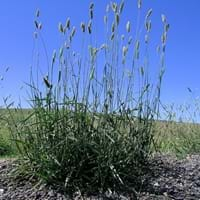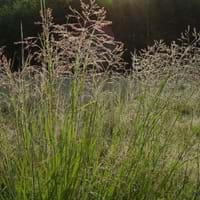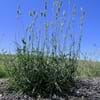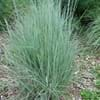Life Span
Perennial
Perennial
Origin
North America, Europe
North America, Canada, Mexico, China
Types
Phalais arundinacia
Canay Grass
Phalaris aquitica
Phalaris minor
Phalaris Paradoxa
Not available
Habitat
Cultivated Beds
All sorts of environments
USDA Hardiness Zone
4-8
5-9
AHS Heat Zone
Not Available
9 - 1
Sunset Zone
Not Available
1a, 1b, 2a, 2b, 3a, 3b, 4, 5, 6, 7, 8, 9, 10, 11, 14, 15, 16, 17, 18, 19, 20, 21, 22, 23
Habit
Clump-Forming
Upright/Erect
Flower Color
Yellow
Orange, Purple
Flower Color Modifier
Bicolor
Bicolor
Fruit Color
Black, Green, Dark Green
Brown, Light brown
Leaf Color in Spring
Dark Green
Blue Green, Steel Blue
Leaf Color in Summer
Light Green
Light Green
Leaf Color in Fall
Dark Green
Blue Green, Steel Blue
Leaf Color in Winter
Tan, Brown
Tan, Sandy Brown
Leaf Shape
Grass like
Orbicular
Plant Season
Spring, Summer, Fall
Spring, Summer, Fall, Winter
Sunlight
Full Sun
Full Sun, Partial Sun
Type of Soil
Loam
Clay, Loam, Sand
The pH of Soil
Acidic, Neutral, Alkaline
Acidic, Neutral, Alkaline
Soil Drainage
Average
Average
Bloom Time
Late Spring, Early Summer, Summer, Late Summer
Early Summer, Summer, Late Summer
Tolerances
Wet Site, Drought, Salt
Pollution, Drought, Soil Compaction
Where to Plant?
Container, Ground
Container, Ground, Pot
How to Plant?
Root Division, Rooted stem cutting
Seedlings
Plant Maintenance
Medium
Medium
Watering Requirements
Average Water Needs
Average Water Needs
In Summer
Lots of watering
Lots of watering
In Spring
Moderate
Moderate
In Winter
Average Water
Average Water
Soil pH
Acidic, Neutral, Alkaline
Acidic, Neutral, Alkaline
Soil Type
Loam
Clay, Loam, Sand
Soil Drainage Capacity
Average
Average
Sun Exposure
Full Sun
Full Sun, Partial Sun
Pruning
No need to prune, Remove damaged leaves, Remove dead branches, Remove dead leaves
Remove damaged leaves, Remove dead branches, Remove dead leaves
Fertilizers
All-Purpose Liquid Fertilizer, Apply N-P-K
All-Purpose Liquid Fertilizer
Pests and Diseases
Not Available, Red blotch
Aphids, Rust, Spider mites
Plant Tolerance
Drought
Drought
Flowers
Insignificant
Showy
Flower Petal Number
Single
Single
Foliage Texture
Not Available
Fine
Foliage Sheen
Matte
Matte
Attracts
Aphids, Crickets, Mites, Snails
Birds
Allergy
Not Available
Scratches
Aesthetic Uses
Borders, Ground Cover
Not Available
Beauty Benefits
Not Available
Not Available
Environmental Uses
Air purification
Air purification, Biodegradable plastics production, Soil conservation
Medicinal Uses
Not Available
Not Available
Part of Plant Used
Not Available
Not Available
Other Uses
Not Available
Animal Feed, Used to feed livestock
Used As Indoor Plant
No
No
Used As Outdoor Plant
Yes
Yes
Garden Design
Edging, Feature Plant, Groundcover, Mixed Border
Edging, Feature Plant, Foundation, Mixed Border, Wildflower
Botanical Name
PHALARIS
PANICUM virgatum 'Dallas Blues'
Common Name
Phalaris
Dallas Blues Switchgrass, Switchgrass
In Hindi
Phalaris
Dallas Blues Grass
In German
Phalaris
Dallas Blues Grass
In French
Phalaris
Dallas Blues Grass
In Spanish
Phalans
Dallas azules Hierba
In Greek
Phalans
Dallas Blues Grass
In Portuguese
Phalans
Dallas azuis da grama
In Polish
Phalans
Dallas Blues Grass
In Latin
Phalaris
Dallas Blues Grass
Phylum
Tracheophyta
Magnoliophyta
Class
Magnoliopsida
Liliopsida
Clade
Angiosperms, Commelinids, Monocots
Angiosperms, Commelinids, Monocots
Tribe
Poeae
Not Available
Subfamily
Phalaridinae
Panicoideae
Season and Care of Phalaris and Dallas Blues Grass
Season and care of Phalaris and Dallas Blues Grass is important to know. While considering everything about Phalaris and Dallas Blues Grass Care, growing season is an essential factor. Phalaris season is Spring, Summer and Fall and Dallas Blues Grass season is Spring, Summer and Fall. The type of soil for Phalaris is Loam and for Dallas Blues Grass is Clay, Loam, Sand while the PH of soil for Phalaris is Acidic, Neutral, Alkaline and for Dallas Blues Grass is Acidic, Neutral, Alkaline.
Phalaris and Dallas Blues Grass Physical Information
Phalaris and Dallas Blues Grass physical information is very important for comparison. Phalaris height is 60.00 cm and width 60.00 cm whereas Dallas Blues Grass height is 120.00 cm and width 60.00 cm. The color specification of Phalaris and Dallas Blues Grass are as follows:
Phalaris flower color: Yellow
Phalaris leaf color: Dark Green
Dallas Blues Grass flower color: Orange and Purple
- Dallas Blues Grass leaf color: Blue Green and Steel Blue
Care of Phalaris and Dallas Blues Grass
Care of Phalaris and Dallas Blues Grass include pruning, fertilizers, watering etc. Phalaris pruning is done No need to prune, Remove damaged leaves, Remove dead branches and Remove dead leaves and Dallas Blues Grass pruning is done Remove damaged leaves, Remove dead branches and Remove dead leaves. In summer Phalaris needs Lots of watering and in winter, it needs Average Water. Whereas, in summer Dallas Blues Grass needs Lots of watering and in winter, it needs Average Water.





